|
Got a question about key machines? not sure what to buy? need a user manual? have some tips for keeping one running well or need help cutting or programming keys? Post here!
 by MBI » 26 Nov 2013 8:59 by MBI » 26 Nov 2013 8:59
I've seen a lot of folks want to make a home-made key cutter over the years, but this is by FAR the best one (and one of the only successful ones). Very nice you had the most expensive parts already laying around.
-
MBI
- Moderator Emeritus
-
- Posts: 1346
- Joined: 9 Oct 2007 2:29
- Location: Utah, USA
-
 by ckc123 » 27 Nov 2013 13:19 by ckc123 » 27 Nov 2013 13:19
fgarci03 wrote:Would you care to post a full tutorial on this?  And maybe a video of a key being cutted?
I have a few more improvements to do before I post a lot more on it.. I'm going to add an LCD screen so you don't need a PC connected, and add controls to the cutter motor (on/off) and the attached vaccum (really helps cut down on the dust).
-
ckc123
-
- Posts: 195
- Joined: 2 Jan 2011 21:49
- Location: North of the GTA
 by ckc123 » 1 Dec 2013 10:59 by ckc123 » 1 Dec 2013 10:59
Ok.. Order some more "production" level boards and switches, but in the meantime I hacked together some stuff so I can write the code while I'm waiting.. Here it is.. it can now stand alone and be configured via the buttons/LCD screen Here is the hardware pics Wide Angle 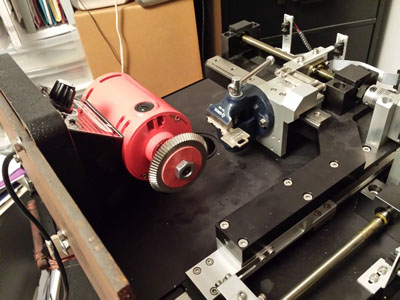 Stepper Motors / carrier 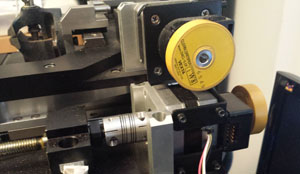 Motor Mount 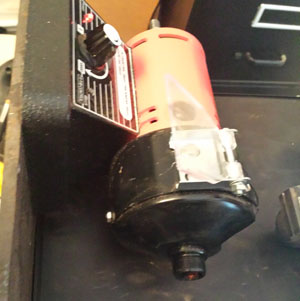 Key in Cutter 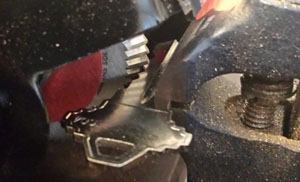 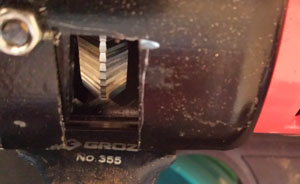 Main Arduino Board 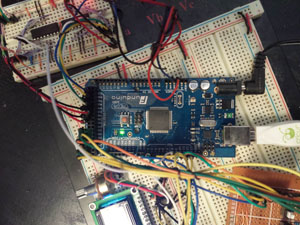 Motor Driving Board 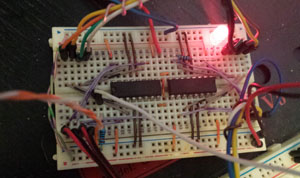 Button Control Board 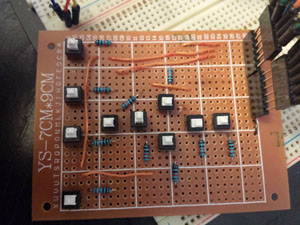 Startup Screen 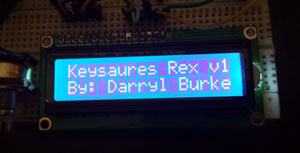 Display the startup Toggle buttons on button board (Master Key Cut, Load Key, Eject Key, Wiggle feature for slightly wider cuts) 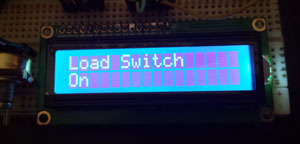 Main default menu (to start the cutting via the menu) 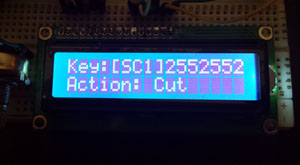 Optional button to immediately start cutting (eg bulk cutting where you don't what to have to press any menu buttons.) 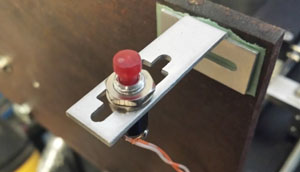 Moving the Carriage 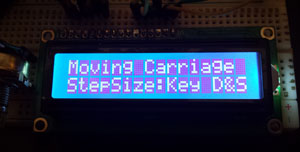 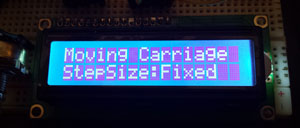 Setting the KeyType and Depths to Cut 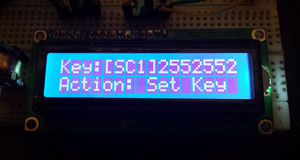 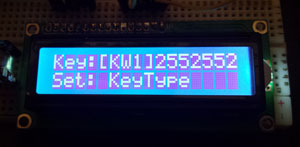 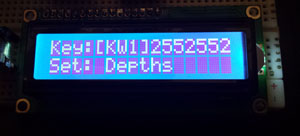 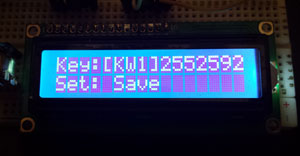 Thats it!!!
-
ckc123
-
- Posts: 195
- Joined: 2 Jan 2011 21:49
- Location: North of the GTA
 by jeffmoss26 » 1 Dec 2013 17:45 by jeffmoss26 » 1 Dec 2013 17:45
Very impressive!!
"I tried smoking a blank once. I was never able to keep the tip lit long enough to inhale." - ltdbjd
-
jeffmoss26
-
- Posts: 1090
- Joined: 13 Jan 2012 15:01
- Location: Cleveland, OH
 by fgarci03 » 2 Dec 2013 14:05 by fgarci03 » 2 Dec 2013 14:05
THAT-IS-SO-COOL! Thanks for posting the pics! I am inspired  Go ahead, keep plugging away, picking on me! You will end up on bypass or with rigor mortise.
- GWiens2001
-
fgarci03
-
- Posts: 1009
- Joined: 18 Dec 2012 21:38
- Location: Porto/Portugal
-
 by ckc123 » 2 Dec 2013 14:09 by ckc123 » 2 Dec 2013 14:09
fgarci03 wrote:THAT-IS-SO-COOL! Thanks for posting the pics! I am inspired 
if your interested, I know where you can pick up another of those stages for about $100. 
-
ckc123
-
- Posts: 195
- Joined: 2 Jan 2011 21:49
- Location: North of the GTA
 by fgarci03 » 2 Dec 2013 14:57 by fgarci03 » 2 Dec 2013 14:57
Well I don't have money for these kind of projects atm.. But it's very nice of you, thanks  Would posting the code be asking too much? I completely understand if you want to keep it to yourself, for obvious reasons! But if you feel like it, it would be a nice way for us to understand how it works! Go ahead, keep plugging away, picking on me! You will end up on bypass or with rigor mortise.
- GWiens2001
-
fgarci03
-
- Posts: 1009
- Joined: 18 Dec 2012 21:38
- Location: Porto/Portugal
-
 by ckc123 » 2 Dec 2013 21:28 by ckc123 » 2 Dec 2013 21:28
I have no problem posting the code ( and the list of parts needed) for anyone who is interested.
once I can get it in a bit better shape (and finish up a few tweaks) I''ll put it online..
-
ckc123
-
- Posts: 195
- Joined: 2 Jan 2011 21:49
- Location: North of the GTA
 by Nitrous » 3 Dec 2013 16:44 by Nitrous » 3 Dec 2013 16:44
ckc123 wrote:I have no problem posting the code ( and the list of parts needed) for anyone who is interested.
once I can get it in a bit better shape (and finish up a few tweaks) I''ll put it online..
Really a great looking job! Thanks for sharing this. I've done some research on the cutters that might interest you. I believe you're using a symmetrical, biaxial cutter. That is fine for large cylinders, but if you want to cut smaller keys I.e. Master Padlock or automotive keys, you'll need an asymmetric cutter. Otherwise, there is a risk of cutting into the shoulder, if the first cut is deep. If you look at the Blitz, you'll see the cutter for small cylinders us an 1101. This is an asymmetrical, biaxial milling cutter. The Ilco 029A is a dual function duplicator, code cutter but I believe it's primarily for automotive work. The cutter is a CU29. Again, it's biaxial (cuts on both sides of the disc) but is asymmetrical (the cutting surface on both sides of the disc are not equal) allowing the cutter to get close to the shoulder of the blank. These cutters also have a "flat" aspect the gives the bottom pin a suitable place to seat. They are available on ebay for $50 or $60. Again, great job. Nitrous
-
Nitrous
-
- Posts: 65
- Joined: 8 Nov 2012 20:26
 by ckc123 » 3 Dec 2013 17:11 by ckc123 » 3 Dec 2013 17:11
Nitrous wrote:I believe you're using a symmetrical, biaxial cutter. That is fine for large cylinders, but if you want to cut smaller keys I.e. Master Padlock or automotive keys, you'll need an asymmetric cutter.
Nitrous.. you raise a very good point.. The code that I wrote will work for an asymmetric cutter. (while it's not used now).. it can perform a "traveling cut" and not just a straight "plung". you would use the traveling cut for the small pin.. just like a key copier.. the hard part is just determining the vector for each transition from space to space. (but it's just math, so as I used to say at work.. it's just 1 & 0's you just have to line them up in the right order..)
-
ckc123
-
- Posts: 195
- Joined: 2 Jan 2011 21:49
- Location: North of the GTA
 by Nitrous » 3 Dec 2013 22:30 by Nitrous » 3 Dec 2013 22:30
ckc123 wrote:Nitrous wrote:I believe you're using a symmetrical, biaxial cutter. That is fine for large cylinders, but if you want to cut smaller keys I.e. Master Padlock or automotive keys, you'll need an asymmetric cutter.
Nitrous.. you raise a very good point.. The code that I wrote will work for an asymmetric cutter. (while it's not used now).. it can perform a "traveling cut" and not just a straight "plung". you would use the traveling cut for the small pin.. just like a key copier.. the hard part is just determining the vector for each transition from space to space. (but it's just math, so as I used to say at work.. it's just 1 & 0's you just have to line them up in the right order..)
I understand the idea of a travelling cut but the flat on the first cut needs to be a fixed distance from the shoulder of the blank. If the depth of cut is deep enough, the shoulder side of the biaxial cutter will have to cut into the shoulder. That is the problem that an asymmetric cutter solves. In fact, the use of traveling rather than plunge cuts with the asymmetric cutter is likely the best of both worlds. Maybe I'm missing something. Nitrous
-
Nitrous
-
- Posts: 65
- Joined: 8 Nov 2012 20:26
 by ckc123 » 3 Dec 2013 22:39 by ckc123 » 3 Dec 2013 22:39
Well the way I understand it.. the MACS prevents each of the cuts for a single cut to interfere with another, and with the shoulder itself. (which is why the 1st cut is further than the first to first cut) you can't have the first cut go past the shoulder if you are using the correctly angled cutter (now is you use a 100 when the spec is a 90, then you would.. but then again you try to stay away from having the first cut being the deepest on a key anyways since it will be the "weak point" in the key if it does break in the lock etc..
but regardless. any key cutting machine if it uses an asymmetric cutter can cut a nice 90 degree cut on the shoulder if
-
ckc123
-
- Posts: 195
- Joined: 2 Jan 2011 21:49
- Location: North of the GTA
 by HeadHunterCEO » 4 Dec 2013 17:13 by HeadHunterCEO » 4 Dec 2013 17:13
That is excellent
Doorologist
-
HeadHunterCEO
-
- Posts: 1262
- Joined: 7 Apr 2004 21:10
- Location: NY,NY
 by Nitrous » 4 Dec 2013 18:19 by Nitrous » 4 Dec 2013 18:19
ckc123 wrote:Well the way I understand it.. the MACS prevents each of the cuts for a single cut to interfere with another, and with the shoulder itself. (which is why the 1st cut is further than the first to first cut) you can't have the first cut go past the shoulder if you are using the correctly angled cutter (now is you use a 100 when the spec is a 90, then you would.. but then again you try to stay away from having the first cut being the deepest on a key anyways since it will be the "weak point" in the key if it does break in the lock etc..
but regardless. any key cutting machine if it uses an asymmetric cutter can cut a nice 90 degree cut on the shoulder if
Not sure how MACS will affect the first cut vs the shoulder of the key. If you have a MACS of 4 and the first cut is 4 or greater, you'll certainly cut into the shoulder (on a small cylinder key) with a 90 degree symmetrical cutter. But a 4 cut will still hit the shoulder if the MACS is 7 or 3. I don't believe MACS factor into the first cut (although most wouldn't recommend a really deep cut next to the shoulder, but that is to reduce risk of weakening the blank). If I'm wrong on this, please correct me. I agree with you that an asymmetric cutter like an 1102 or CU29 will not interfere with the shoulder. Nitrous
-
Nitrous
-
- Posts: 65
- Joined: 8 Nov 2012 20:26
 by Nitrous » 4 Dec 2013 18:31 by Nitrous » 4 Dec 2013 18:31
Just one more thought on the "any asymmetric cutter will produce a nice 90 deg at the shoulder" comment.
If you have a regular size cylinder, a deep plunge cut with a CU29 will give a nice 45 deg cut on the tip side of the key, but a 90 deg shoulder on the top of the cut on the bow side. That's fine with a first cut, but I think it could create some problems inserting the key. If the key manages to get in, it would come out nicely, but those 90 deg bow side cuts might be a real problem.
Nitrous
-
Nitrous
-
- Posts: 65
- Joined: 8 Nov 2012 20:26
Return to Key Machines & Programmers
Who is online
Users browsing this forum: No registered users and 1 guest
|
